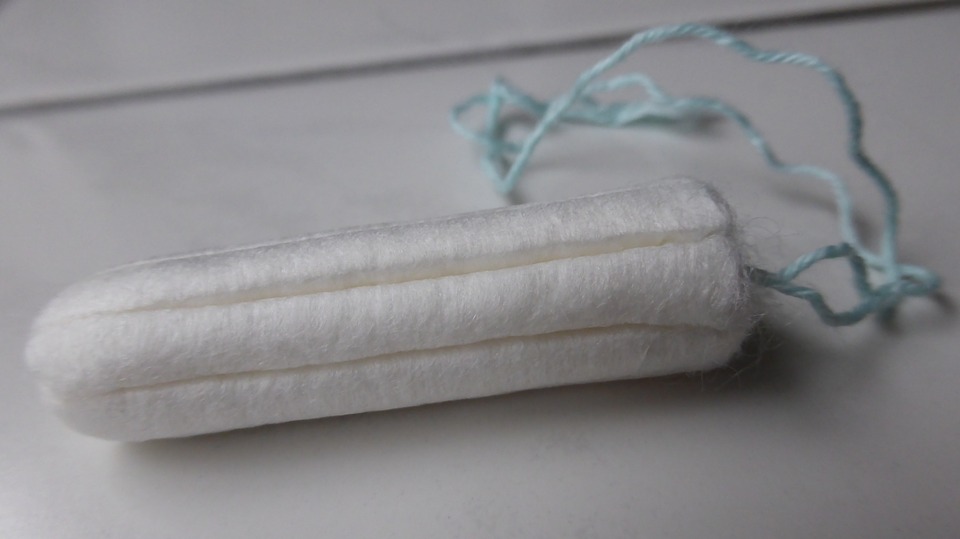Consumer product purchases usually require minimal thought beyond a sense of “running out” and a need to replenish. The more specific the need, for example, feminine hygiene products, the more factors enter into the purchasing decision, factors such as reliability, protection and discretion, together with perceptions of safety, convenience and comfort. Brand loyalty is strong in this category. However, when asked to describe the content of a feminine hygiene product such as a tampon, consumers know what they want (it’s cotton, isn’t it?) and what they expect to experience, but do not know how these benefits are delivered and by what ingredients.
A typical tampon is comprised of an absorbent core, an overwrap and an attached withdrawal cord. The core and overwrap are compressed into a slender cylinder which, usually contained in an applicator, may be inserted to absorb fluid. Contact with fluid causes the tampon to expand and become bulky, allowing the absorbent core to intercept and hold fluid. When full, the tampon is removed by the cord and disposed of.
For tampons, most women have concerns regarding leakage and safety, concerns which are reflected in a preference for cotton and a belief that all tampons contain cotton. True, a large proportion of tampons use cotton but some absorbencies and brands use rayon or rayon mixed into the cotton. Of all known fibers, women probably know more about cotton, and appreciate it better, than any other. It’s historical and current use in every aspect of personal care and household needs involving babies, cosmetics, cuts, towels, bedding, underwear and clothing is unsurpassed. Cotton absorbs and holds on to liquids better than paper or rayon, dry’s faster, is non-irritating and is hypoallergenic. Regarding safety, cotton has been used successfully in hygiene, medicine and surgery for generations, and has never been associated with toxic shock syndrome. Growing cotton also is required to meet food standards of safety because cotton seed is processed after fiber recovery to produce cotton seed oil and nutrition for farm animals. Importantly, whatever is in a tampon is subject to FDA scrutiny as a medical device, for absorbency and for content. Finally, women are persuaded by biodegradability, that is, flush and forget. Cotton, and rayon where it is used, both biodegrade, but destruction rate is affected by the nature of the wrapping of the absorbent core. The better wraps are made of either rayon or cotton, bonded by natural starch, while some do use synthetic manmade fabrics, which are not degradable. Cotton and rayon overwraps are preferred, with rayon having the advantage that it becomes softer and flexible when wet, making tampon removal easier.
While not all tampon absorbent cores contain cotton, the majority of them, those labelled “Regular” and “Super” do. Sometimes it is necessary to add to the desirability of cotton for tampon cores, by adding a quantity of rayon, needed to deliver a higher absorbency tampon as permitted by the FDA. Cotton makes rayon perform better. Cotton provides what rayon cannot, it becomes stronger and stiffer when wet, compensating for added rayon, which becomes weaker and more limp when wet. Thus, when cotton absorbent tampons are made compressed, they remain stable and when inserted they quickly absorb and expand, using their increased stiffness to form a resilient sponge of small spaces that store fluid, during wear and ultimate removal. They hold on to liquid within and between fibers, and resist squeeze out, which can result in leakage.
Removal of a used tampon requires that the cord and the overwrap ease the absorbent from the body while keeping the absorbed liquid trapped inside the core. The overwrap reduces the friction of movement while the wet resiliency of the purified cotton absorbent keeps the spaces between cotton fibers open and full of absorbed liquid.
If the cord is made of cotton, and many are, they are designed to be strong, and only get stronger as they become moist. Cords control insertion depth, they permit repositioning and finally, they ensure clean and easy removal.
Cotton in general, and purified absorbent cotton in particular, has an unsurpassed heritage in fulfilling consumer needs for a safe effective absorbent. Cotton, a natural fiber grown to food grade standards, purified and processed to achieve FDA, US Pharmacopeia and hypoallergenic criteria, accepted by the FDA in medical devices and by consumers in numerous personal care and household applications has created consternation in many consumers minds when faced with a new product, or even an old one, “You mean it isn’t made of cotton”…….Maybe your next product idea should be?
This post was contributed by our good friend and fiber expert, Tony Butterworth.
